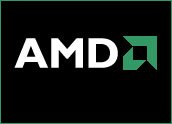
AMD, which has been clawing its way out of the doldrums, recently showcased its octacore, 16-thread Summit Ridge desktop processor featuring its Zen core in a performance match-up against Intel’s octacore Broadwell-E Core i7-6900K CPU.
The two similarly configured processors were locked at 3 GHz for the test, in which they ran the multithreaded Blender rendering application, in a demo presented earlier this month in San Francisco.
AMD’s Summit Ridge outperformed the Intel processor.
“They showed a benchmark where, under the conditions they set, they came up neck and neck with Broadwell, which is Intel’s highest-performing chip,” acknowledged Martin Reynolds, a Gartner distinguished analyst.
However, “that doesn’t guarantee you great performance,” he told TechNewsWorld.
Souped-Up Pinto
On the other hand, AMD “fixed all of the things that were obviously wrong with the previous generation,” Reynolds pointed out, adding full dual-thread capability and dramatically improving cache bandwidth.
“This is like taking your Ford Pinto and giving it eight cylinders, making sure it has a really good fuel and air injection system, and giving it proper controls,” he observed.
Zen is based on a clean-sheet design. It has a new cache hierarchy, improved branch prediction, and simultaneous multithreading. It will scale to meet a broad range of use cases, from fanless 2-in-1s to embedded systems, high-performance computing and data centers, AMD noted.
AMD hasn’t begun to focus, suggested Rob Enderle, principal analyst at the Enderle Group.
However, “it’s likely this part will do better than Intel on some loads and not as well on others — that has yet to be determined,” he told TechNewsWorld.
Picking Up Steam
AMD underclocked the Intel Broadwell to match Summit Ridge in the demo — the Broadwell is clocked at 3.6 GHz, noted Kevin Krewell, a principal analyst at Tirias Research.
“We expect AMD will be able to match or exceed the Intel clock speeds when [Summit Ridge] ships in early 2017,” he told TechNewsWorld.
AMD also demoed the 32-core, 64-thread Zen-based Naples server processor, in a dual-processor server running Windows Server, at the San Francisco event.
Both processors demoed are CPU-only, which is unusual for AMD.
“AMD wanted to … give a further glimpse of where we are in development of our next-gen product, and take the opportunity to demonstrate a variety of combinations,” spokesperson Jay Marsden told TechNewsWorld.
The company “has been strong on having graphics and the chipset together, but this is not an APU — it doesn’t have the graphics on the chip,” Gartner’s Reynolds noted.
That makes it easier to debug the processor and “tells us they’re designing the processor to go after high-performance segments — server sockets and high-end gaming,” he suggested.
AMD will ship the Naples server in Q2 2017, and an APU processor with integrated graphics for the mobile and small form factor in 2H 2017. Processors for the embedded market will include both CPU-only items and APUs.
Zen Processor Caveats
“The Zen core achieved a 40 percent generational improvement in instructions per cycle, but IPC is not a good measure,” Reynolds said.
The speed at which a processor works is determined by how much time it spends waiting for instructions, so “even a really good processor might spend 40 percent of its time sitting around,” he pointed out, “and if you make it twice as fast, that means it’s waiting around twice as long.”
Further, Blender is “heavy on floating point,” Reynolds noted, “We didn’t get any kind of spread benchmark. The waiting around needs to be dealt with, and we need to see multiple benchmarks.”
The Zen core has dedicated PCIe lanes for cutting-edge USB, graphics, data, and other I/O, so it won’t take lanes from other devices and components, AMD said.
“Without dedicated lanes, devices can compete for resources, lowering performance,” Enderle explained.
Until the processors are independently tested, “this is more of a showcase of what the product may do, and not yet what it will do,” he cautioned, but OEMS “are unusually excited about [the Zen core], which tends to suggest there is fire under all this smoke.”






















































